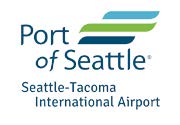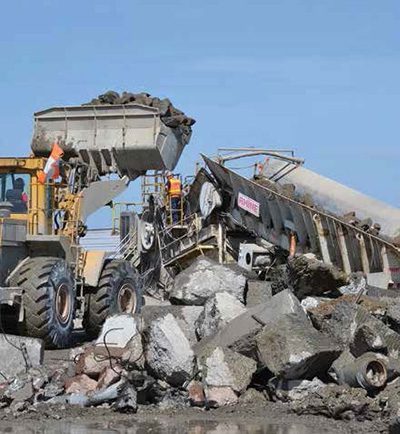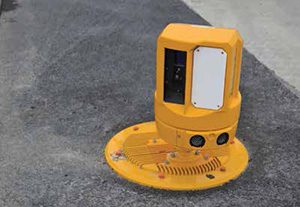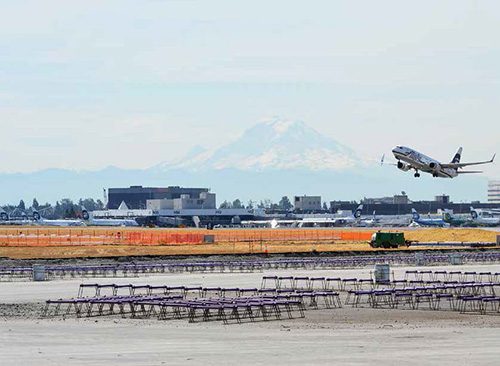Seattle-Tacoma International Airport (SEA) recently completed the total reconstruction of Runway 16C-34C, giving new life to the oldest of its three runways. And what a life it will be. The 9,426-foot runway that was originally built in 1969 is now projected to have another 40-year lifecycle.
“This is a relatively new change,” says Airport Operations Manager Robert Kikillus. “The FAA finally recognizes a 40-year life; and for a minimal additional cost, an inch of concrete, we gained 20 years. It’s amazing that little bit can double the life of your runway.”
SEA’s newly reconstructed center runway is expected to reopen this November. Kikillus notes that ongoing concrete panel replacements (more than 600 out of 4,000 in the last two decades) kept 16C-34C functional and safe over the years, but it was time to completely rebuild it.
 factsfigures factsfiguresProject: Runway Reconstruction Location: Seattle-Tacoma Int’l Airport Owner: Port of Seattle Runway: 16C-34C Length: 9,426 ft. Cost: $95 million Funding: Received $15 million FAA grants (another $10 million anticipated); $70 million in airport development funds & future revenue bonds Projected Lifecycle: 40 yrs. Design: Airport Staff Onsite Design Consultant: HNTB Bids Released: Dec. 2014 Construction Closure: May – Nov. 2015 Contractor: Joint Venture of Scarsella Brothers & Acme Paving Electrical Contractor: Colvico Electric Asphalt Paving: Icon Materials Striping & Pavement Markings: Apply-A-Line Preformed Thermoplastic Markings: AirMark, by Ennis Flint Automated Foreign Object Debris Detection System: FODetect Solution, by XSight Systems FOD System Prime Contractor: Varec FOD System Installation: Leidos Grooving: Pinnacle Grinding & Grooving Fiber Splicing: Integrity Concrete Breaking: Antigo Construction Concrete & Base Material Recycling: Rhine Demolition Delastic Preformed Compression Seals: D.S. Brown Co. Lighting Fixtures: ADB Airfield Solutions/Airside Solutions Material Volume: 65,000 sq. ft. of preformed thermoplastic markings; 200,000 sq. yds. of new concrete; 16,000 linear ft. of new storm drain pipe |
After this $95 million project and literally tons of other pavement work throughout the last seven years, all three of SEA’s runways are either new or newly rebuilt. Runway 16R-34L was added in 2008 and 16L-34R was reconstructed in 2009. (See Nov./Dec. 2008 issue of Airport Improvement for more information about the Runway 16R-34L project.)
Future-Forward Design
In-house design for the reconstruction of Runway 16C-34C began in October 2013, and the project was put out for bid in December 2014. The original timeline for the project was accelerated by a full year after 2014 discussions with FAA regarding the condition of the pavement.
The runway was closed from May until mid-November this year for reconstruction, and all air operations at SEA were temporarily directed to its other two runways.
Total cost for the project is estimated at $95 million, and the Port of Seattle received $25 million in FAA grants. The remaining $70 million was allocated from airport development funds and future revenue bonds.
The newly constructed center runway contains 8 inches of crushed rock sub-base, 4 inches of asphalt and 18 inches of Portland cement concrete. It includes more than 4,000 panels, each 20 by 18.75 feet in size. While Group 5 runway standards require 35-foot shoulders, SEA chose to incorporate 50-foot shoulders to allow 16C-34C to accommodate larger aircraft in the future.
Airport staff designed the reconstruction project, and HNTB consulted onsite. A joint venture of Scarsella Brothers & Acme Paving executed the design as general contractor.
Ralph Wessels, SEA’s Airfield Program leader, notes that the project’s front-loaded design schedule was challenging at first, but delivered good results in the end. The design group presented the project to contractors three months before opening it for bids to explain the phasing and share documents about what the bid items/quantities would be.
“This was an advantage to us and them, as they were able to start preparing bids and making contacts to subcontractors and suppliers,” Wessels notes.
The modified schedule also helped SEA meet its goal of increasing participation by small businesses. Meeting with the overall contractor community earlier than usual gave the airport an opportunity to encourage small firms to be a part of the large project by providing them with extra time to decide whether they could manage particular parts of the project, explains Wessels.
Continuing the Tradition
Airport engineers worked to make the center runway project environmentally friendly and economically sensible. Recycling concrete, LED lighting and improving water management helped in both cases.
LED fixtures were specified in all airfield signs maintained by the Port of Seattle, as well as in edge and centerline lights for the runway. “It was unanimous on the savings, not only on electricity but also maintenance time,” says SEA
Project Manager Don Axt.
Both members of the contractor joint venture say using recycled concrete was a major highlight of the project. Crews recycled concrete from the existing pavement and crushed it onsite. What would have otherwise been a waste product was then used as sub-base material for the new runway, taxiways, shoulders and blast pads. Dan Rivera, project manager for Scarsella Brothers, notes that the strategy saved SEA a considerable amount of money and allowed the construction team to optimize its compaction efforts. Meeting the 100% density compaction required for the SEA runways is a challenging feat on such a large project, adds Rivera.
Bryan White, project manager with Acme Paving, points out that crews used three slipform paving machines for the entire runway – all 18 inches deep, in 37.5-foot and 20-foot widths and a total of 9,426 feet long. “It really increases the quality of the finished product, and as contractors, is something we’re really proud of,” he relates.
About 25% of the asphalt was recycled as well, which further reduced transport costs and decreased vehicle traffic on public roads near the airport as well as on and off the airfield.
Water management was another sizable environmental component of the project. No untreated water was allowed to leave the site, specifies Kikillus – a commitment that required an extensive system to divert all water into an existing underground filtration facility. Making sure that 100% of the water used was self-contained and not wasted was especially important given Seattle’s dry summer, White adds.
Scheduling Made Simple
 Rivera reports that using a single scheduler for the joint venture helped the project run smoothly, despite the inherent challenges of running a worksite sandwiched between two busy airfield areas. “The (aircraft) traffic flow constantly changes from north to south,” he explains. “We had to switch the haul routes, use other access points and were constantly moving soft closures.”
Rivera reports that using a single scheduler for the joint venture helped the project run smoothly, despite the inherent challenges of running a worksite sandwiched between two busy airfield areas. “The (aircraft) traffic flow constantly changes from north to south,” he explains. “We had to switch the haul routes, use other access points and were constantly moving soft closures.”
The Port of Seattle suggested using a joint scheduler to facilitate a collaborative approach for managing work and moving construction forward without inconveniencing travelers. Coordination between all the disciplines and contractors kept the team on a tight schedule, Rivera reports. “If one stumbles, it becomes a domino effect,” he remarks.

Kikillus concurs with his construction team, noting that the airport couldn’t simply “patch off the whole area and have the contractor go at it.” Instead, planners had to phase the project to ensure that taxiways were available so aircraft could cross the construction site throughout the project. “We had to work out safety issues and there weren’t any conflicts between aircraft and construction equipment,” he details.
 “There had to be a compromise between the inconvenience of travelers and what is realistic for construction,” adds White. “That’s a very delicate balance.” He credits the Port of Seattle for being flexible and receptive while the team strived to achieve that balance. He also highlights HNTB, for keeping both function and construction in mind during the design process and helping contractors remain cost-effective and efficient throughout the project. “The team designed a runway with both function and construction in mind, allowing everyone to be cost effective and efficient throughout the entire timeline,” he adds.
“There had to be a compromise between the inconvenience of travelers and what is realistic for construction,” adds White. “That’s a very delicate balance.” He credits the Port of Seattle for being flexible and receptive while the team strived to achieve that balance. He also highlights HNTB, for keeping both function and construction in mind during the design process and helping contractors remain cost-effective and efficient throughout the project. “The team designed a runway with both function and construction in mind, allowing everyone to be cost effective and efficient throughout the entire timeline,” he adds.
 Working day in and day out on the front lines of the project, the joint-venture companies saw a number of opportunities to complete tasks sooner than originally scheduled and help the project as a whole, comments Rivera. “We’ve always looked at this as a ‘mantle’ project,” he adds.
Working day in and day out on the front lines of the project, the joint-venture companies saw a number of opportunities to complete tasks sooner than originally scheduled and help the project as a whole, comments Rivera. “We’ve always looked at this as a ‘mantle’ project,” he adds.
White agrees about the project’s magnitude: “It’s pretty rare in the Northwest for an (airport) to completely reconstruct an entire runway at once. This is a very significant piece of infrastructure, and you don’t get to do these projects very often.”
For SEA’s Axt, the most exciting part of completing the large project is its longevity: “No more runways for 30 years!”




| Automating FOD Detection An automated system to detect foreign object debris (FOD) on the center runway at Seattle-Tacoma International (SEA) puts the busy airport at the leading edge of routine airfield inspection and safety. The system uses high-definition cameras and radar technology to constantly inspect the newly reconstructed Runway 16C-34C for debris that can cause major damage if sucked into an aircraft engine. SEA is only the second U.S. airport to install the FODetect Solution, from Xsight Systems, and is the first to fully fund the project. Logan International Airport (BOS) in Boston was the first to add the automated system. Loose aircraft hardware, catering supplies, pieces that have broken off luggage and everyday litter are common examples of FOD found on airfields across the globe. Kikillus notes that the timing was right to add an automated system at SEA: “FOD detection technology has reached a level of maturity, and we saw the value of including it in the runway reconstruction project.” He considers the integrated nature of FODetect Solution to be a major advantage. Monitors are positioned on runway edge lights, so it just takes a bit of extra wiring to use the existing infrastructure, he explains. The new FOD system also provides wildlife management benefits, adding to the airport’s already robust program, informs Kikillus. In addition to flagging inanimate FOD such as pieces of rock or pavement, the system will also be set up to detect wildlife on the runway and in the surrounding area. “The goal is to combine the data with the two avian radars we already have and get a better picture of the bird activity at the airport,” he explains. A team from SEA spent one day at BOS, learning best practices regarding the automated FOD detection system. “The nice thing about airports is we cooperate with each other in the overall avenue of safety,” notes Dave Richardson, manager at SEA’s Communication Center. |


 Even with staff members diligently inspecting the airport’s three runways three times per day, a piece of debris can appear just a few minutes after inspection, notes Robert Kikillus, Airport Operations manager at SEA. “An automated FOD detection system is continuously scanning the runway surface; so as soon as something is detected, we receive a notice and can send someone out (to remove it),” he explains.
Even with staff members diligently inspecting the airport’s three runways three times per day, a piece of debris can appear just a few minutes after inspection, notes Robert Kikillus, Airport Operations manager at SEA. “An automated FOD detection system is continuously scanning the runway surface; so as soon as something is detected, we receive a notice and can send someone out (to remove it),” he explains. 
